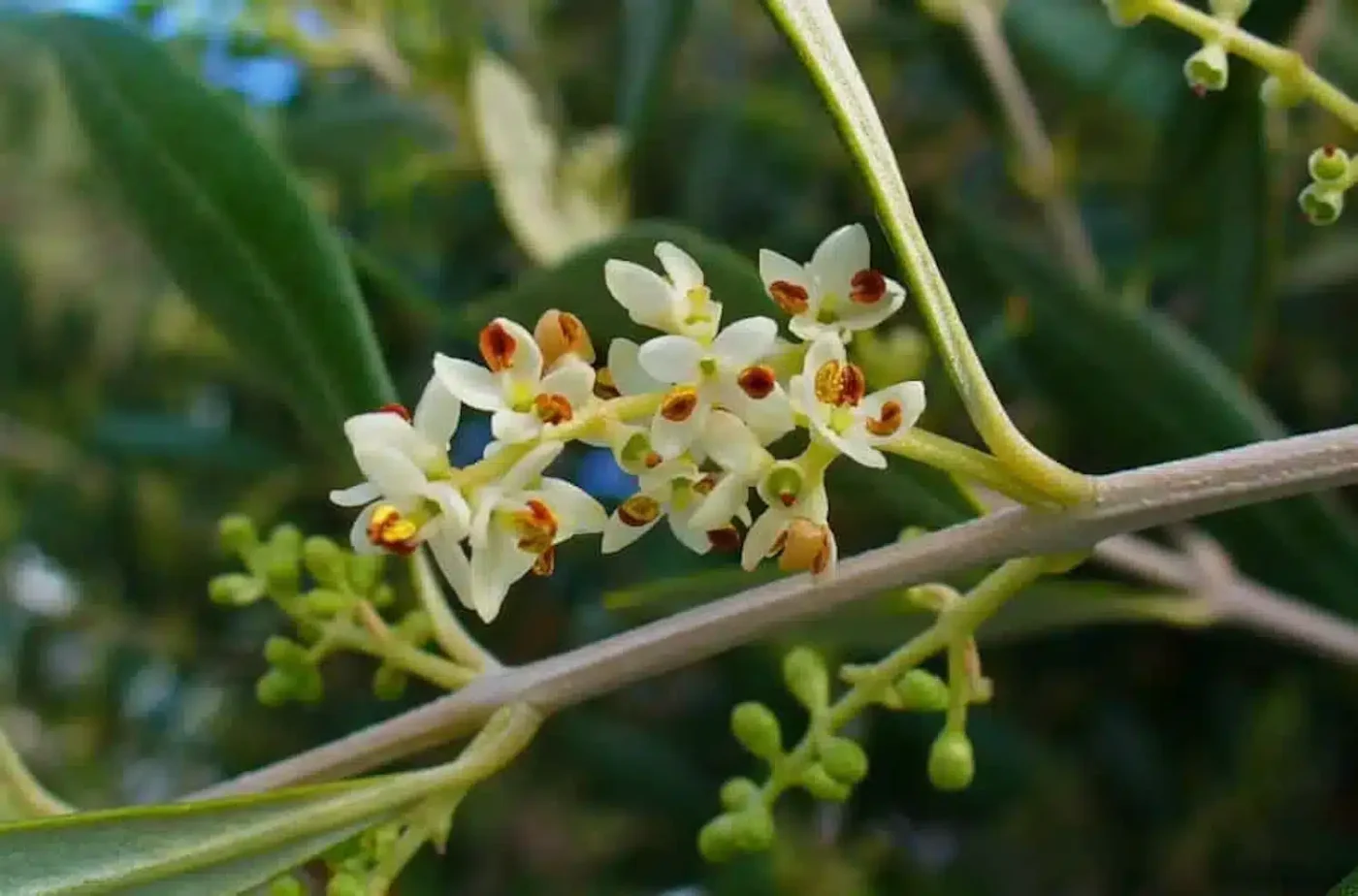
The olive blossom has various names depending on the location: rapa, esquimo, cadillo, or trama. The flowers grow in clusters of between 10 and 40 flowers, depending on the variety. Each flower has four fleshy white petals, forming a cross. They have an orange-yellow center and provide white touches to the olive grove. Each flower lasts approximately a week, so the flowering phase of olive trees is short.
Olive blossoms are small, grouped in clusters of between ten and fifty flowers, depending on the variety. They are whitish in color, have a yellow center, are composed of four petals, and have a small calyx.
They have a uniform corolla, two stamens, and a four-lobed blade. They have a mild, mild odor. Because the flowers are small and white, the olive tree’s blossoming often goes unnoticed by those outside the olive grove world. Its pollen is more striking in areas with large olive groves.
Although there is some variability in the timing of the blossoming, it usually occurs in the middle of May. This is a critical period for the future of the harvest, as if the blossoming is poor, the harvest may be poor.
Sometimes, temperatures rise sharply in May, and the flowers may wither without germinating and producing fruit. The olive tree’s blossoming period is relatively short, depending on the olive variety, and ends in June. It is at this time that this tree is at its peak, albeit for a brief period.
Normally, olive trees bloom in mid- to late May, but due to a cold and/or rainy spring, the olive trees have blossomed later. It is now, in mid-June, that we can contemplate the marvelous landscape they offer.
Thus, the olive tree is filled with clusters that transform the appearance of the tree and add white touches to the olive grove. Furthermore, the flowering phase of olive trees is short, barely a week.
Most olive flowers are hermaphroditic, having a pistil and stamens with pollen. In particular, the exclusively male flowers only have stamens and therefore do not bear fruit. Pollen from an olive tree cannot fertilize its own flowers or those of nearby olive trees if it recognizes them as belonging to the same family. Therefore, pollen grains travel long distances to pollinate the flowers of other olive trees. This is why there are more than 200 varieties of olives.
Most of the flowers fall within a week, before being pollinated, and only 2% of the flowers remain on the tree. Of this 2% of fertilized flowers, many will still be lost while they transform into fruit, and only the strongest and healthiest fruit will remain on the tree.
Interestingly, only very rarely does pollen from an olive tree fertilize the flowers of the same variety. Nature therefore needs to cross-breed varieties to ensure the maintenance and strength of the species.
This ensures the proper nutrition and growth of its seeds, the olives, which we then turn into the highest quality extra virgin olive oil.
Important Note: aceitedelcampo.com promotes the consumption of extra virgin olive oil for its culinary qualities and health benefits. However, no medication or current treatment should be replaced without the guidance of a healthcare professional.




ALZAYT EXPORT SL
info@aceitedelcampo.com
C/ Eduardo Bosca 19, 2-5
46023 Valencia
Subscribe and receive a coupon by email for your next purchase.